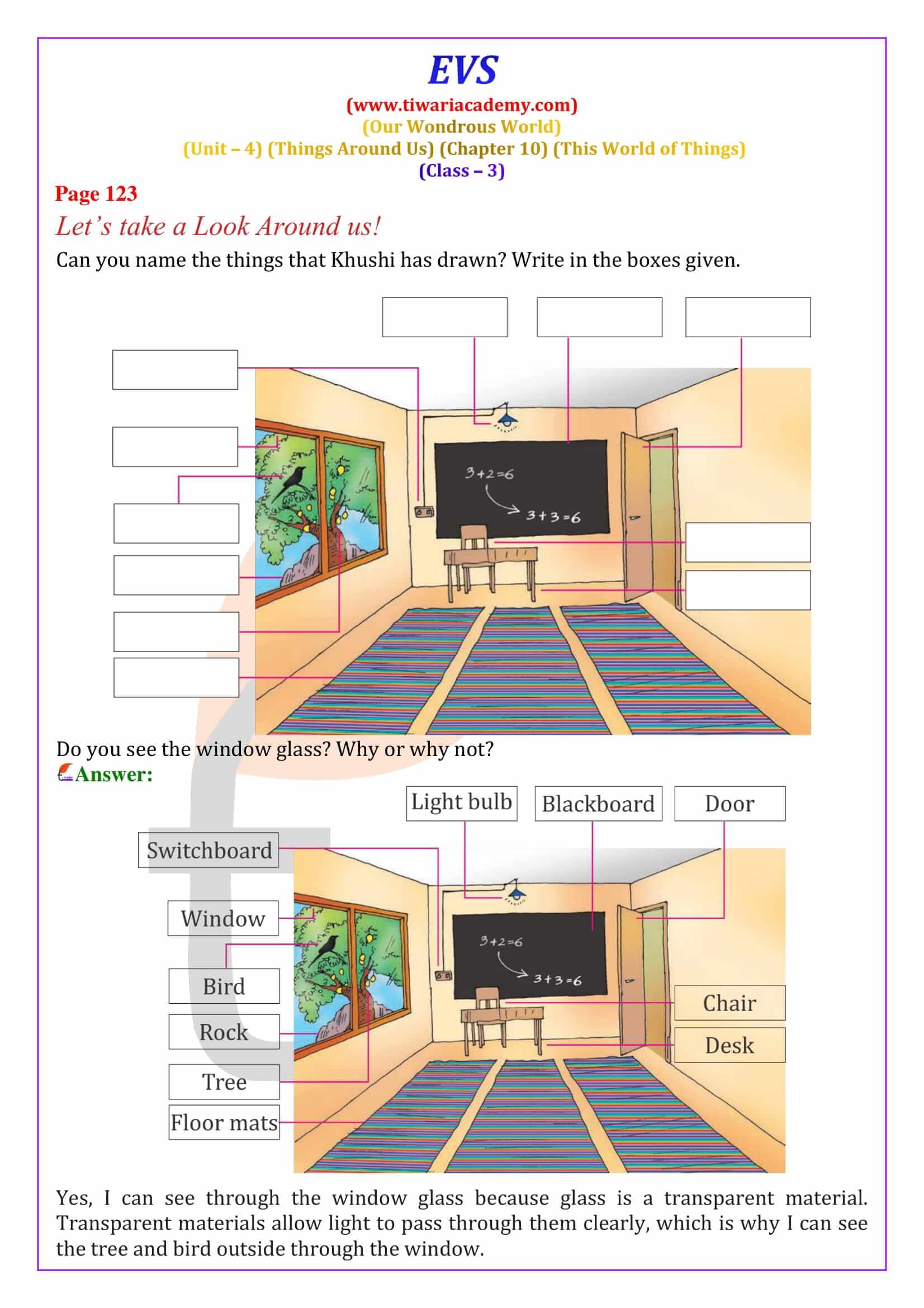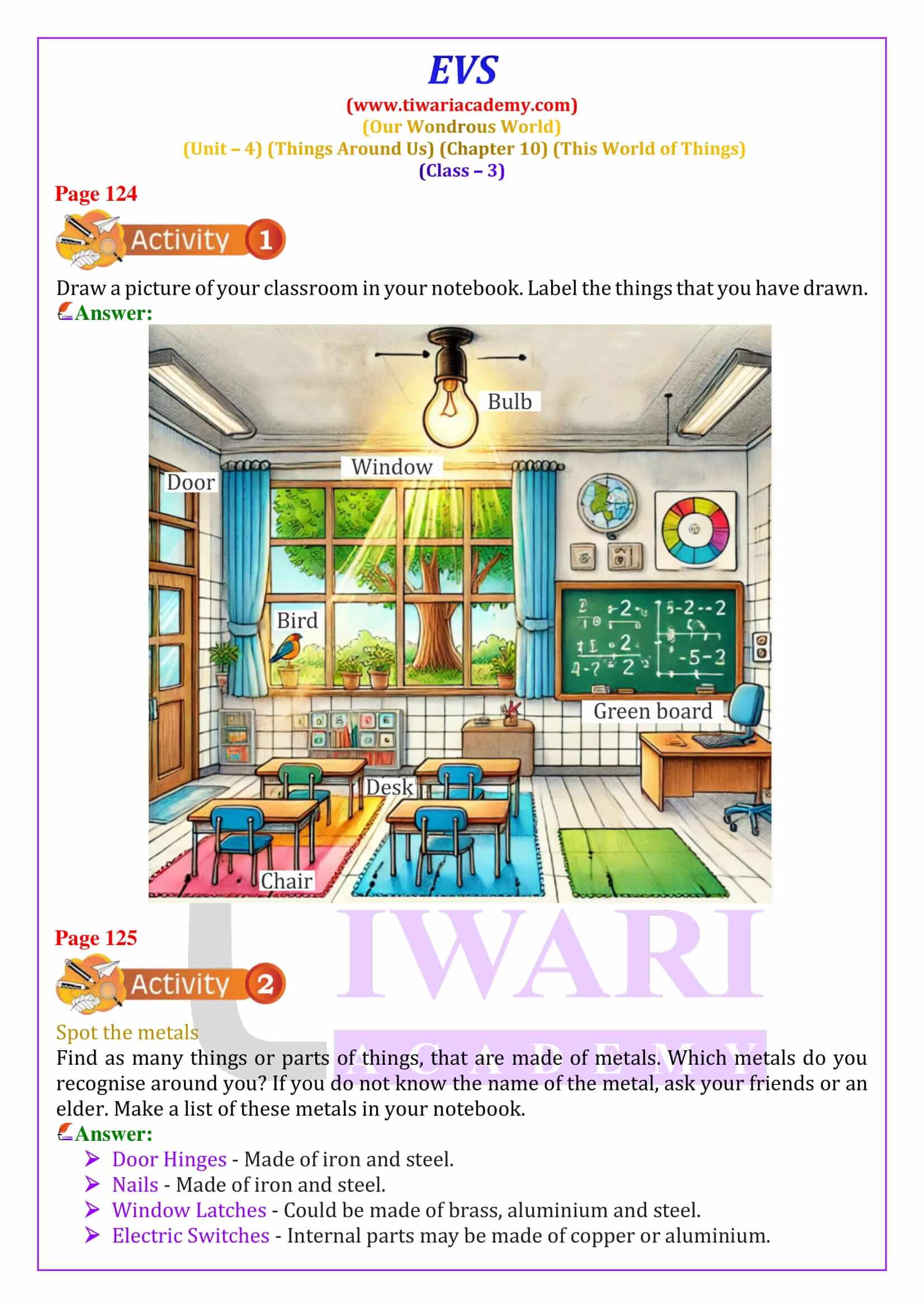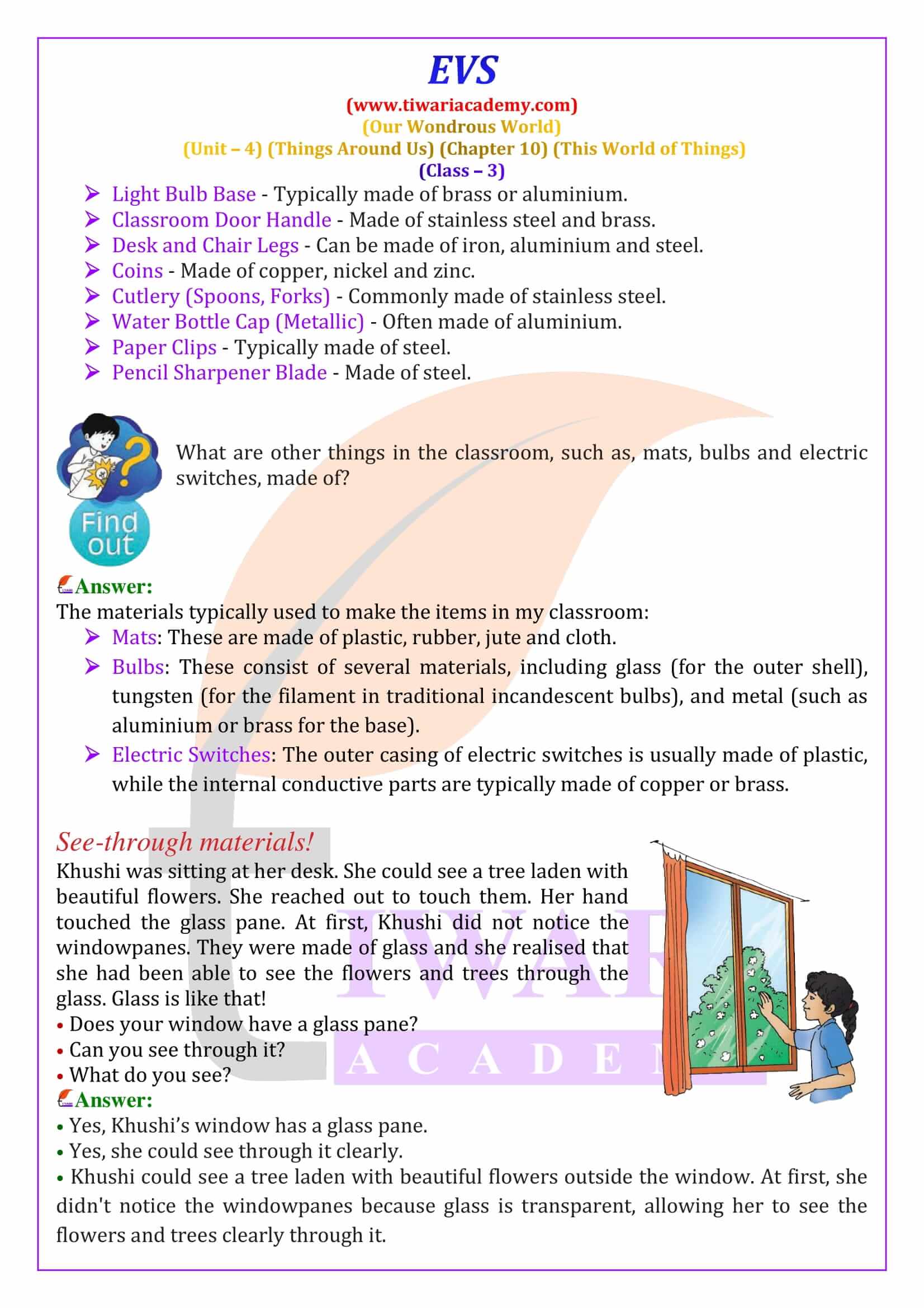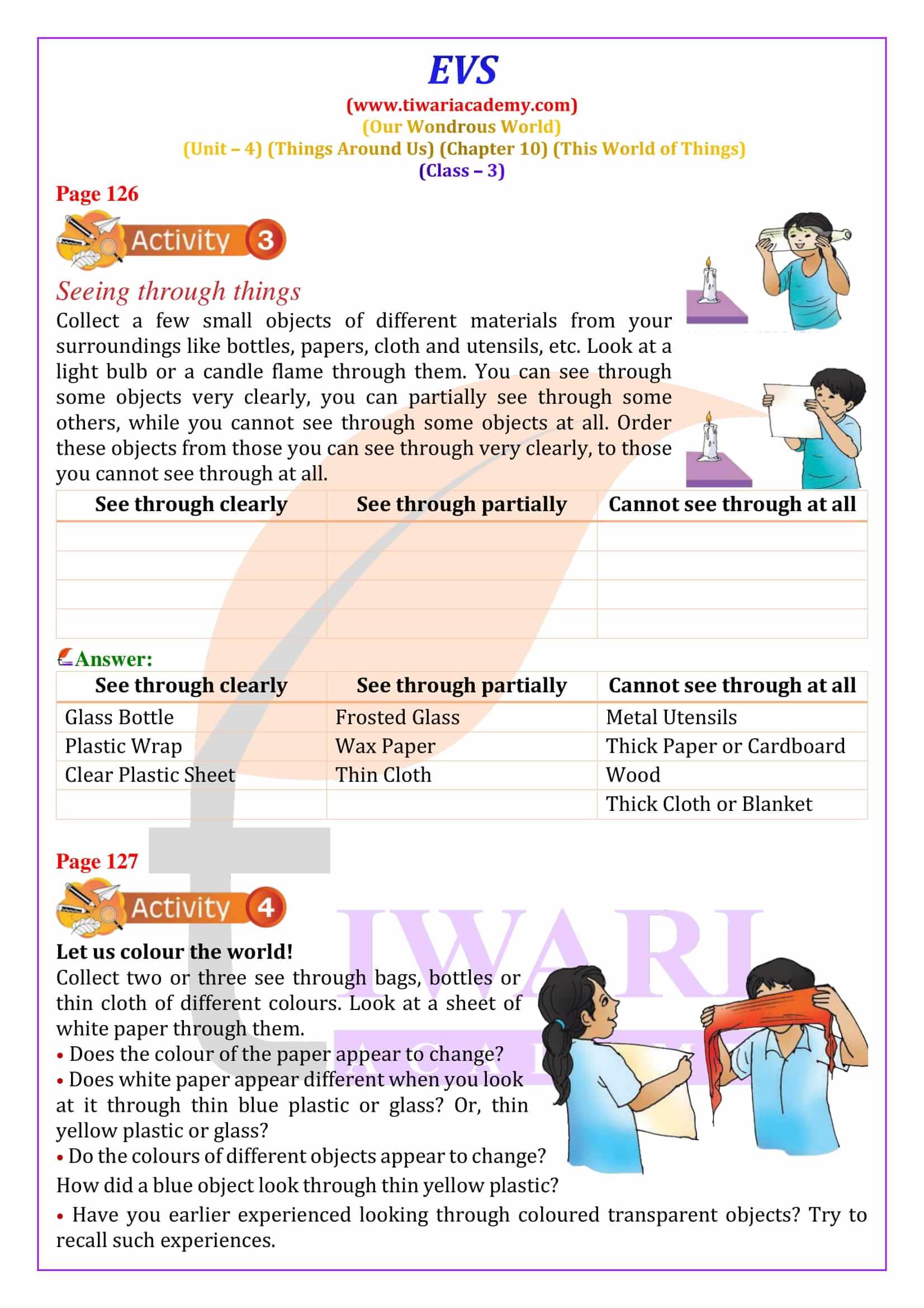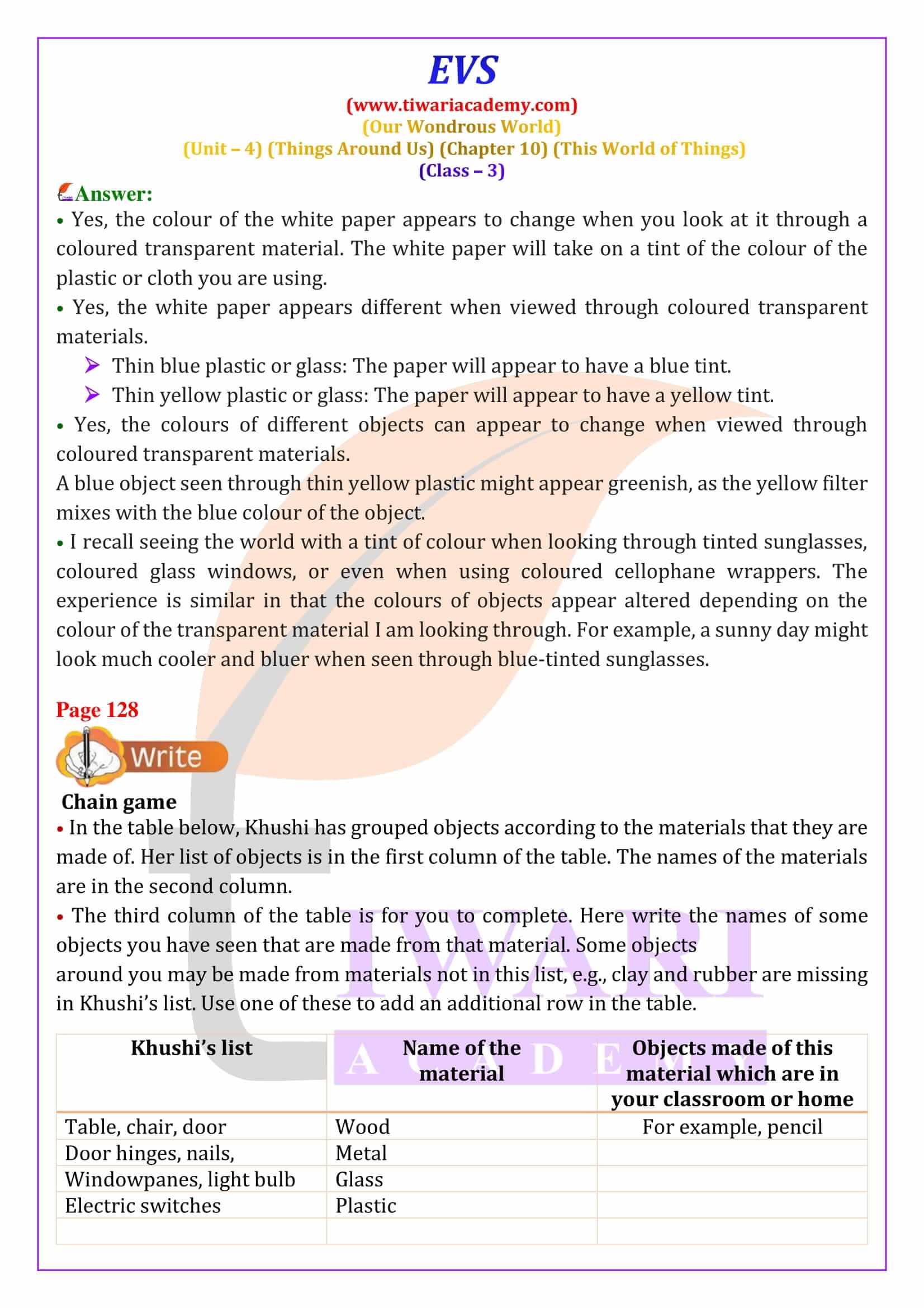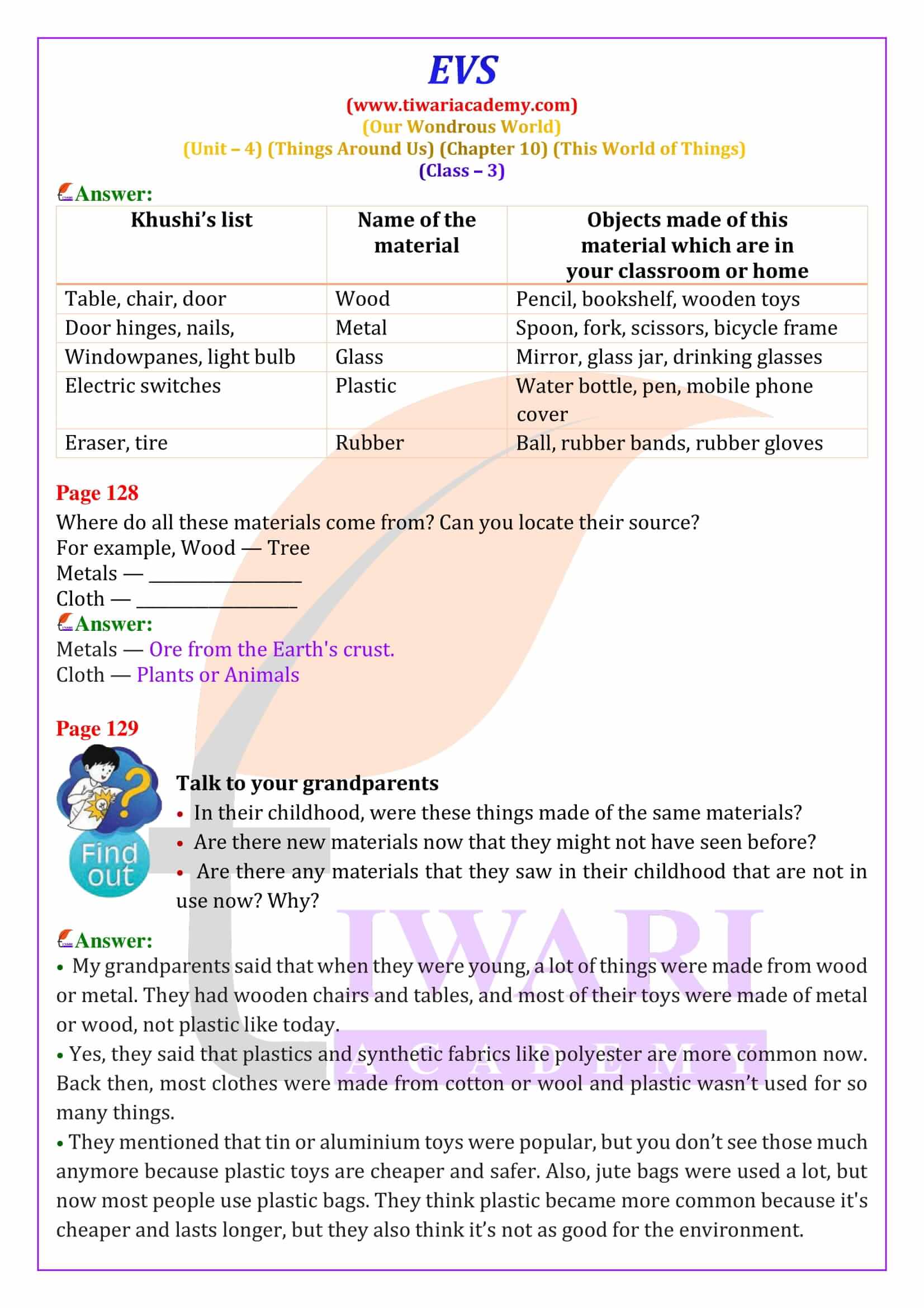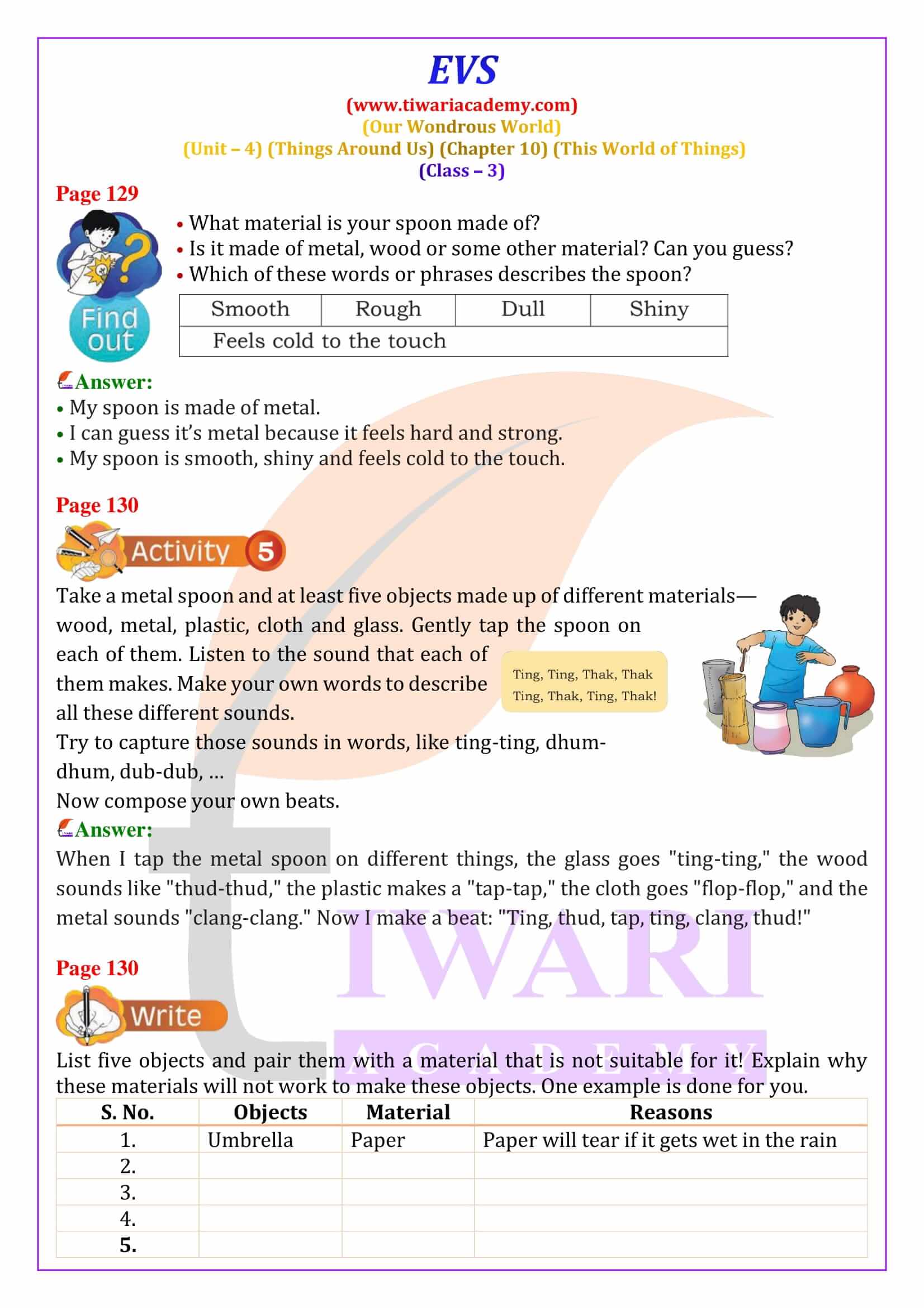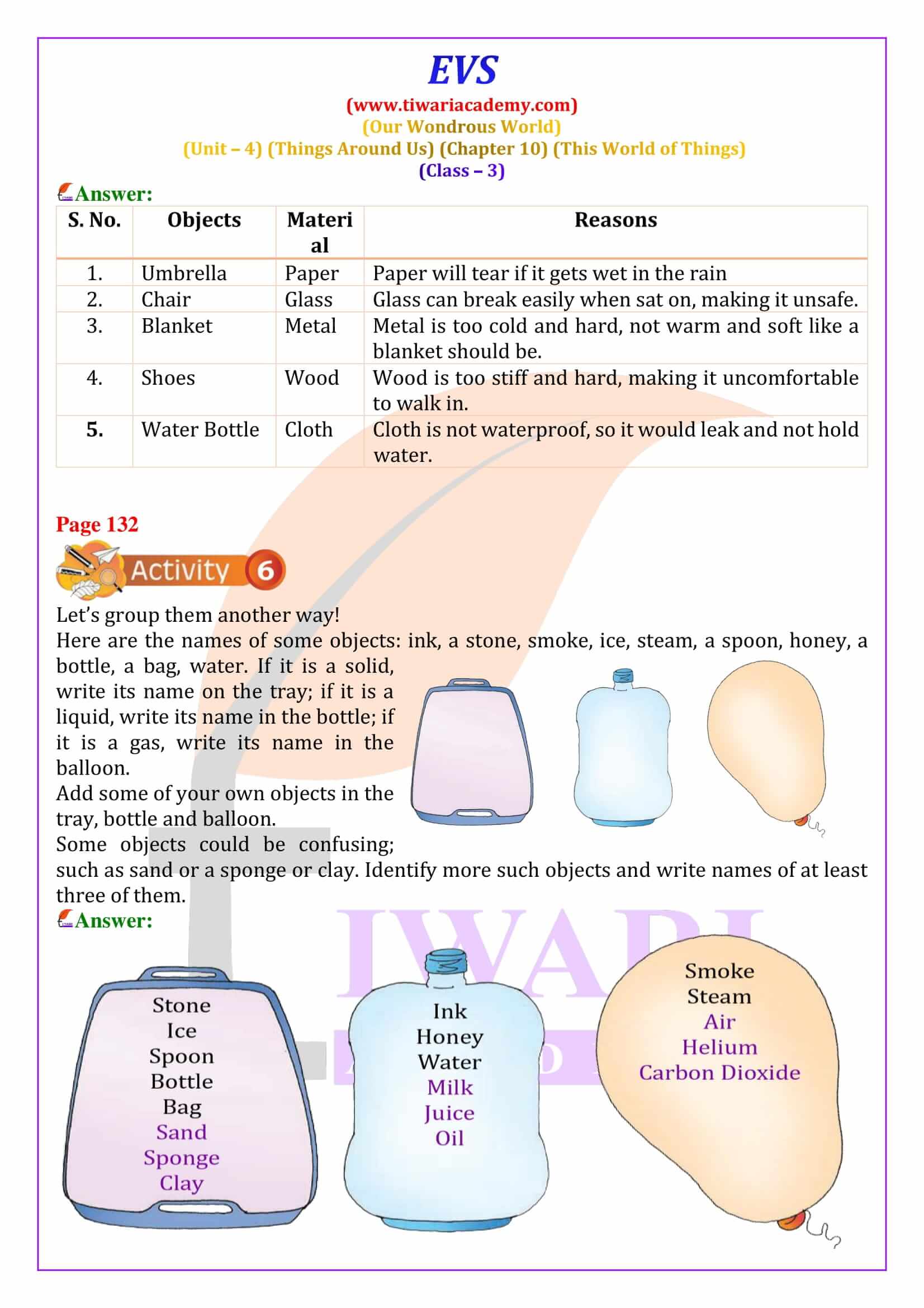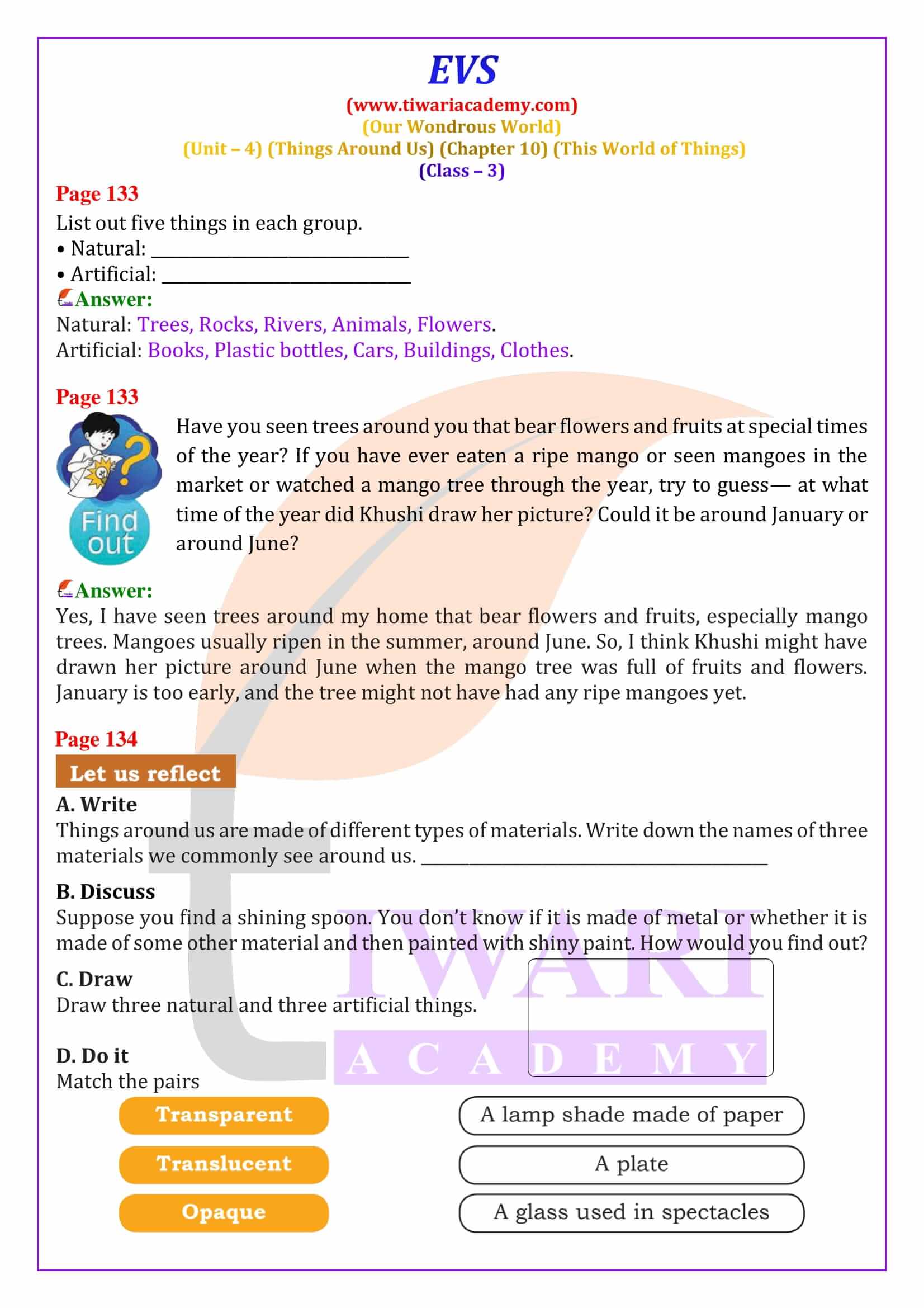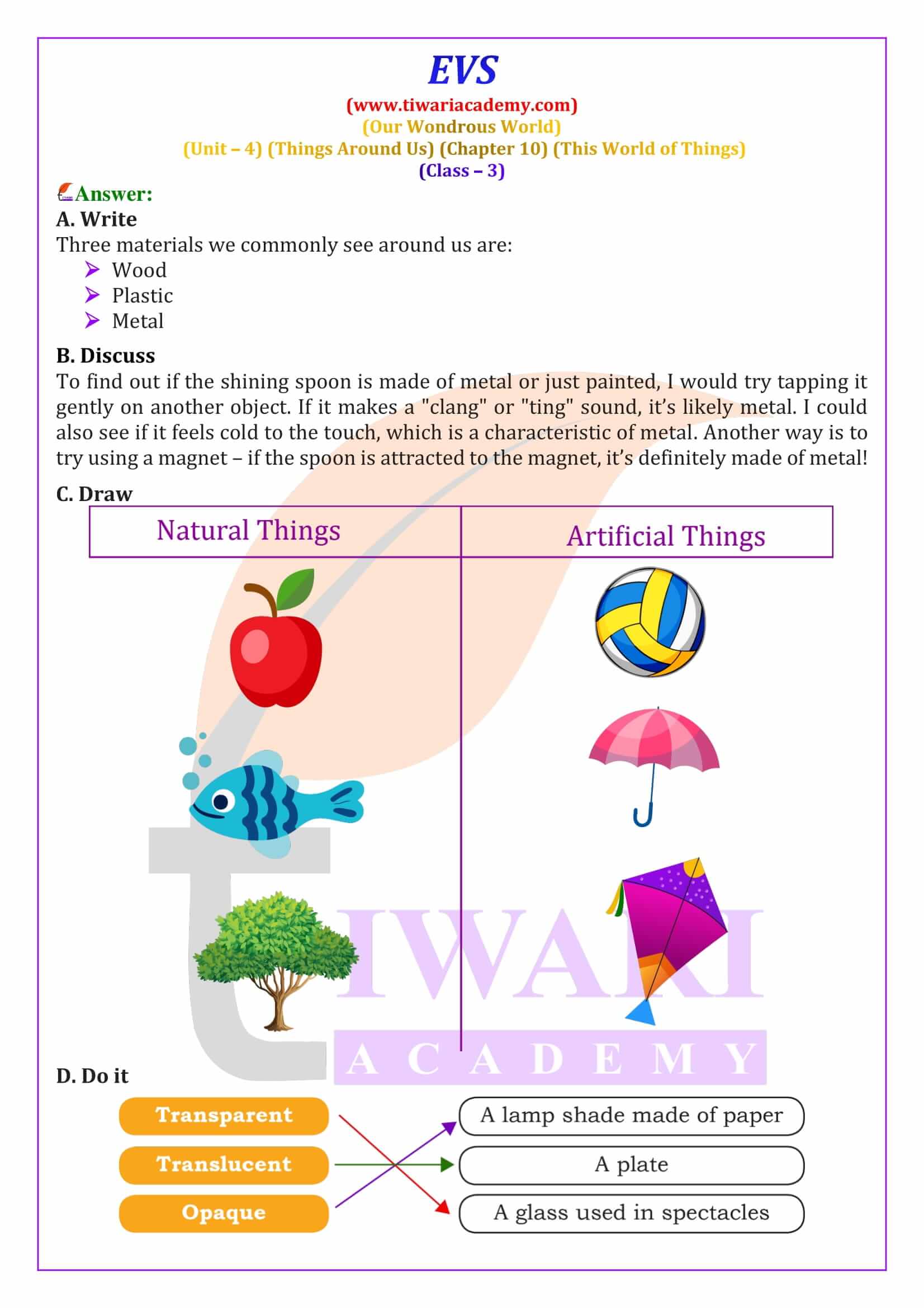NCERT Solutions for Class 3 EVS Chapter 10 This World of Things based on new addition book Our Wondrous World for the session 2025-26. It explores the objects we use daily. Class 3 EVS Chapter 10 discusses the materials and functions of everyday items, helping students appreciate the utility and significance of common objects in their lives.
Class 3 EVS Chapter 10 This World of Things Question Answers
Introduction to This World of Things
Welcome to Chapter 10 of your Environmental Studies book, Our Wondrous World. In this chapter 10, this World of Things, we will explore the fascinating materials that make up the objects around us. From your classroom to your home, everything you see is made from different materials like wood, metal, glass and plastic. Through this chapter, you’ll learn to recognize these materials, understand their uses and discover how they are sourced. Let’s begin this exciting journey to uncover the world of things!
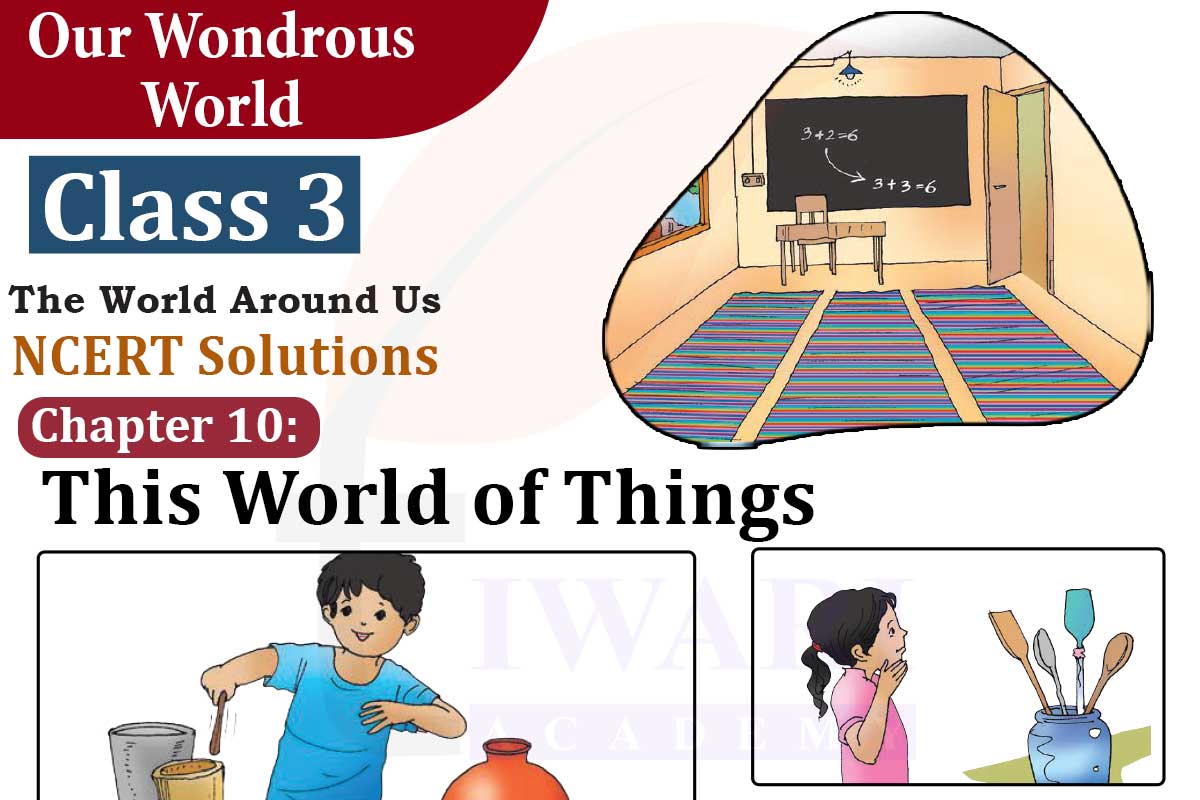
Understanding Your Classroom
Have you ever wondered what the things in your classroom are made of? In this chapter, you’ll draw a picture of your classroom and label the objects you see. For example, the table and chair might be made of wood, while the windowpanes could be made of glass. We will also explore where these materials come from. Did you know that wood comes from trees and metals are dug up from deep inside the Earth? By looking closely at your surroundings, you’ll start to see the world of materials in a whole new way.
Spotting Metals and Other Materials
As we continue our exploration, we will focus on spotting different metals around us. You’ll find metals in things like door hinges, nails and light bulbs. But not everything is made of metal. Some objects, like mats and electric switches are made from other materials. Through fun activities, you’ll learn to identify different materials and understand what makes them special. For example, glass is transparent, meaning you can see through it, while wood is opaque, meaning you cannot see through it.
The Magic of Transparent, Translucent and Opaque
One of the exciting parts of this chapter is learning about transparent, translucent, and opaque materials. Transparent materials, like glass, let you see clearly through them. Translucent materials allow some light to pass through, but not all, so you can only partially see through them. Opaque materials, like wood, do not let any light through. Through simple experiments, you’ll explore how different materials affect the way we see objects. This understanding will help you appreciate the unique properties of the materials around you.
Natural vs. Artificial Materials
In chapter 10 of class 3 EVS, you’ll also learn about the difference between natural and artificial materials. Natural materials, like wood and stone, come from nature and are not made by humans. On the other hand, artificial materials, like plastic and metal objects, are created by people. You’ll be asked to list five natural and five artificial objects that you see around you. This activity will help you understand how humans use natural resources to create the objects we use every day.
Fun Activities and Learning Through Play
To make learning even more fun, the chapter includes activities like the “Chain Game,” where you’ll group objects based on the materials they are made of. You’ll also engage in a sound experiment using a metal spoon and various objects to explore how different materials produce different sounds. These activities are designed to help you understand materials in a playful and engaging way, making your learning experience both educational and enjoyable.
As we conclude this chapter 10, you’ll have a deeper understanding of the materials that make up our world. You’ll have learned to identify different materials, understand their properties, and appreciate the difference between natural and artificial objects. But the learning doesn’t stop here! We encourage you to explore further by observing the materials around you and asking questions. Remember, all the question answers and solutions for Chapter 10 are well-explained and simplified on the Tiwari Academy website. Keep learning and exploring this wondrous world of things!
